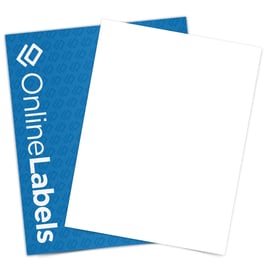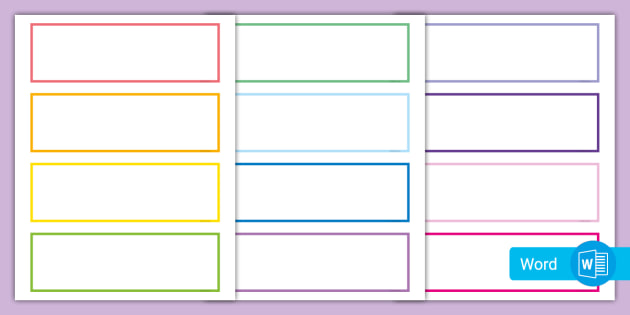All About Blank Labels: The Ultimate Service for Your Personalized Labeling Demands
In the realm of custom labeling, blank tags stand apart as a remarkably functional option that satisfies a large range of company requirements. From item recognition to compliance-driven applications in various industries, these unmarked sticky materials supply an adaptable canvas for creativity and feature. With a substantial selection of materials, forms, and dimensions readily available, organizations can customize their labeling methods to boost both brand name identity and functional efficiency. The true capacity of empty tags commonly goes unacknowledged. What considerations should one keep in mind when discovering this adjustable option?
Recognizing Blank Labels
What do we indicate by blank tags, and why are they substantial in different contexts? Blank labels are unprinted sticky materials that can be customized for a selection of applications across different sectors. These tags work as versatile devices that allow users to communicate information, organize items, and boost branding. Their relevance depends on their flexibility; they can be made use of for item labeling, stock administration, shipping addresses, and even personal company.
The capacity to publish on blank tags permits for customized services that satisfy specific demands. Organizations can use them for labeling products with special barcodes, ingredients, or expiration days, making sure compliance with regulations and improving traceability. In retail, empty tags can facilitate dynamic rates strategies, allowing for very easy updates as market problems alter.
In addition, empty tags are vital for individuals who require customized services for home organization, occasion planning, or DIY projects - Blank Labels. The convenience of printing as needed encourages individuals to produce labels that mirror their specific requirements, advertising effectiveness and clearness. Generally, recognizing blank tags underscores their significance in promoting reliable communication and company across varied applications
Types of Blank Labels
Categorizing empty labels discloses a varied series of choices customized to satisfy different requirements throughout numerous sectors. These labels can be found in numerous materials, shapes, dimensions, and sticky types, enabling a personalized method to labeling.
First, the material made use of for empty tags can consist of paper, vinyl, polyester, and even material, each offering details advantages such as toughness, weather resistance, or eco-friendliness (Blank Labels). Paper tags are often made use of for indoor applications, while plastic and polyester are much better matched for outdoor or high-moisture environments
In terms of sizes and shape, empty tags are available in typical styles like rectangles and circles, along with customized shapes to fit one-of-a-kind needs. This flexibility improves their applicability across different industries, from retail to manufacturing.
Sticky types also vary, with options including permanent, detachable, and repositionable adhesives. Long-term adhesives supply a strong bond for long-lasting use, while removable options permit simple application and elimination without leaving residue. Repositionable labels provide flexibility for adjustments throughout the labeling process.
Applications and Makes Use Of

In the health care area, empty tags are crucial for labeling medicines, sampling containers, and medical tools, guaranteeing compliance with safety and regulative requirements. Likewise, instructional institutions use blank tags for arranging class materials, trainee jobs, and occasion signage, fostering an arranged discovering setting.
Moreover, in the food and drink industry, blank tags allow services to give crucial details pertaining to ingredients, dietary truths, my latest blog post and expiration dates, guaranteeing openness and conformity with food security policies. Craft and pastime sectors take advantage of blank tags as well, permitting people to personalize products or produce tailored gifts.
Benefits of Custom Labels
Custom-made labels supply significant advantages that enhance branding, communication, and effectiveness throughout various applications. By enabling organizations to customize their tags, custom-made options foster a special brand name identification that stands out in a congested market. This distinction is important for drawing in consumers and building brand name commitment.

In addition, customized labels improve functional efficiency. By using blank tags that can be printed on-demand, companies can swiftly adjust to transforming supply, seasonal promos, or regulative demands. This flexibility decreases waste and minimizes expenses related to overflow or stockpiling out-of-date tags.
In addition, the capacity additional reading to produce labels in various shapes, dimensions, and materials ensures that they satisfy certain application requirements, whether for packaging, shipping, or organization. Inevitably, the advantages of custom-made labels not only boost brand presence but additionally simplify processes and enhance total consumer experience, making them a very useful tool for any type of company.
Tips for Creating Labels
When starting the layout of labels, take into consideration the significance of clarity and aesthetic charm to effectively interact your brand's message. Begin by picking an appropriate format that aligns with your product's dimensions and target market. A balanced style ensures that crucial information is popular without frustrating the visitor.
Next, select a shade palette that mirrors your brand name identification. Shades stimulate feelings and can significantly influence consumer habits. Dynamic colors might attract interest, while low-key tones might share sophistication. Make sure that your message contrasts well with the history for simple readability.
Typography additionally plays a crucial role in label layout. Select typefaces that are clear and resonate with your brand's individuality. Limit the number of different font styles to preserve a natural look.
Include top quality photos or graphics that enhance your product's allure. Ensure that these visuals are relevant and expert, as they can make or break the tag's performance.
Final Thought
In conclusion, blank tags serve as a flexible and effective service for a myriad of classifying demands across various markets. By using diverse materials, shapes, and sticky kinds, businesses can develop tailored labels that satisfy certain requirements.